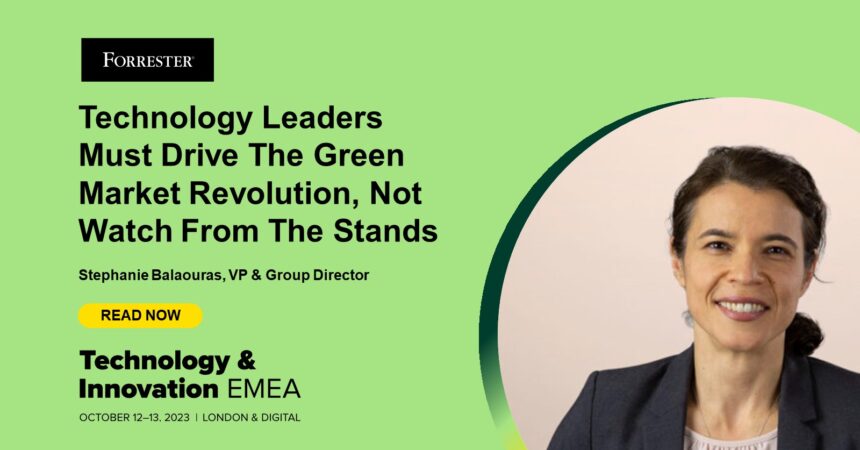When we think about climate action, we often think about switching to renewable energy, electrifying transportation, adopting sustainable agriculture, and developing alternatives to cement. We don’t always think about the carbon footprint and environmental impact of information technology itself, nor do we often think of information technology in the same vein as emerging green technologies like carbon capture or sustainable aviation fuel. And this is a missed opportunity for technology leaders from CIOs to the heads of cloud and infrastructure because:
- In some industries, IT energy consumption represents 26% of scope 1 and 2 emissions. In some industries like financial services and high tech, it can represent more than 40% of scope 1 and 2 emissions. With thousands of companies now committed to science-based targets for carbon reduction, tech leaders can be sure that critical partners are going to demand significant reductions – especially in Europe where 84% of the 50 largest firms have a goal to become carbon neutral in their own operations, and 42% have plans to be carbon neutral in scope 3 too.
- Consumers will often spend more on sustainable offerings. According to Forrester’s 2023 Green Consumer Segmentation: Europe, 24% percent of European online adults are “Active Greens” – they’re willing to buy sustainable products no matter the cost or convenience. As companies create more digitally enabled and immersive customer experiences, IT plays an outsized role in the ability to develop offerings that have a lower carbon footprint and environmental impact that will appeal to these consumers. And environmental conscious consumers will only grow in number, consider that half of Gen Zers in Europe are willing to pay more for environmentally friendly products.
- The green market revolution will be a trillion-dollar opportunity. The decarbonization of every sector of the economy by 2050 will herald a green market revolution akin to the size and scope of the first and second industrial revolutions. It isn’t just companies that compete directly in markets like renewables or EVs, every company will have the opportunity to bring more sustainable products to existing and new markets. There will also be opportunities for consultative and professional services; software and other technology to forecast, model, enable, manage, and measure it all; and partnership opportunities to provide value-added services. Europe has a 23% share of ‘low carbon technology’ (LCT) goods already and between rapidly changing consumer demand across the continent and significant government spending and other initiatives, the opportunity in Europe and to lead from Europe globally are enormous and immediate.
To take advantage of these opportunities, Forrester has strategic tools like our Sustainability Maturity Model and Technology Sustainability Framework, in-depth insights from our Green Consumer Segmentation, and a detailed Green Market Forecast to the year 2050. Want to learn more about the role of technology in environmental sustainability? Join us at the upcoming Tech & Innovation EMEA event 12-13 October in London where I’ll be presenting a keynote entitled Succeeding In The Green Market Revolution With The Power Of Technology









